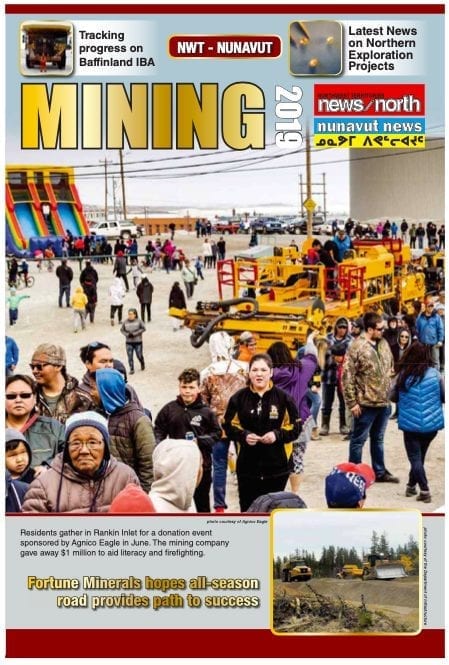For the annual NWT & Nunavut Mining feature that recently appeared in Nunavut News, we approached MLAs for their perspective on the mining industry in the territory. These were the responses from Arviat North-Whale Cove MLA John Main. The full edition of NWT & Nunavut Mining can be found here: https://nnsl.com/special-feature-publications/nwt-nunavut-mining-2019/
Q: What do you consider to be the greatest advantages and disadvantages of mining in the Nunavut?

photo courtesy of the GN
A: The greatest advantages are the careers, the business opportunities and the tax revenues. The careers are desperately needed, with chronic high unemployment in many communities, (mining careers) present huge potential for the next generation of Nunavummiut. The business opportunities help to develop our private sector and drive wealth generation. Tax revenues help the government stay afloat and fund our services.
The disadvantages are environmental effects, related social issues and the boom/bust nature of resource development. Environmental effects on land, water and animals are a big issue for Nunavummiut. I believe that we should be international leaders in how to mine in the Arctic while mitigating and managing negative effects. Social issues include housing pressures, crime trends and lack of childcare – these are already issues on their own but can be exacerbated by mining development. The boom/bust nature of mining is well-known and requires us to heavily invest in skill development and diversification of our local economies.

Firstly, for employment, in my opinion there will never be enough done – never enough schooling and investment until we have mines operated by 100 per cent Nunavummiut. That should be our goal. To realize that, we need all partners working together for labour force development. The Mine Training Society approach makes most sense – one for the whole territory would be best. Just look at the NWT and the successes they have had there with the NWT Mine Training Society.
For royalties in Nunavut, it's all about the Inuit organizations, because the vast majority of royalties flow to them. As a Nunavut MLA, I guess my opinion is royalties are great, wish we had some coming to our bank accounts at the GN. There is the potential for Inuit organizations to use those royalties to help with housing issues and other key challenges, but that hasn't happened yet. Royalties need to be handled carefully in general – if you hike them too high, you will chase away investment. Another cautionary issue with royalties – I believe if you start paying out lump sums to individuals, you can end up taking away incentives for people to get educated and employed.
Q: Do you believe the mines do enough overall for the territory in terms of employment, royalties, donations and legacy projects?
A: As for donations and legacy projects, they are greatly appreciated. However, we shouldn’t have to see mining companies investing in childcare or in emergency services, for example. These are core government responsibilities. Unfortunately, with so many outstanding and unmet needs in our communities, the contributions from mining interests can seem like a drop in the bucket. The past 20 years have shown our territorial government is highly focused on investing in the three regional centres, so mining industry contributions to Nunavut's 22 other communities are refreshing and much needed.
Q: Should mines be involved in supplying housing in surrounding communities?
A: In terms of public housing, or general housing stock, no. That is a core government responsibility. As for housing miners, now that is an interesting idea. There could be an opportunity to combine different problems – high turnover among mine employees, the lack of private homes being built and pressures on the public housing stock – into a program or project to help Nunavummiut mine employees become homeowners. Again, similar to the education and training piece, I believe it would take multiple partners pitching in together to make something like this happen. It can't be the mining industry alone.
Another option for housing would be to support the development of communities adjacent or in close proximity to mine sites. Where the projected mine life sits in the decades, such as is the case with Baffinland's Mary River Mine, we should examine the potential benefits and drawbacks to allowing these new communities to develop. It would be very complicated, but at the same time, so is flying workers two weeks in, two weeks out for years at a time with a family at home. From what I understand, that time away from family is a big part why we don't have more Nunavummiut working in mining. On principle, which living arrangement makes more sense: in a mining town, or working fly-in, fly out? I believe the miners themselves and their families could help decide. Again, this would only make sense with a long-lived mine like Mary River.